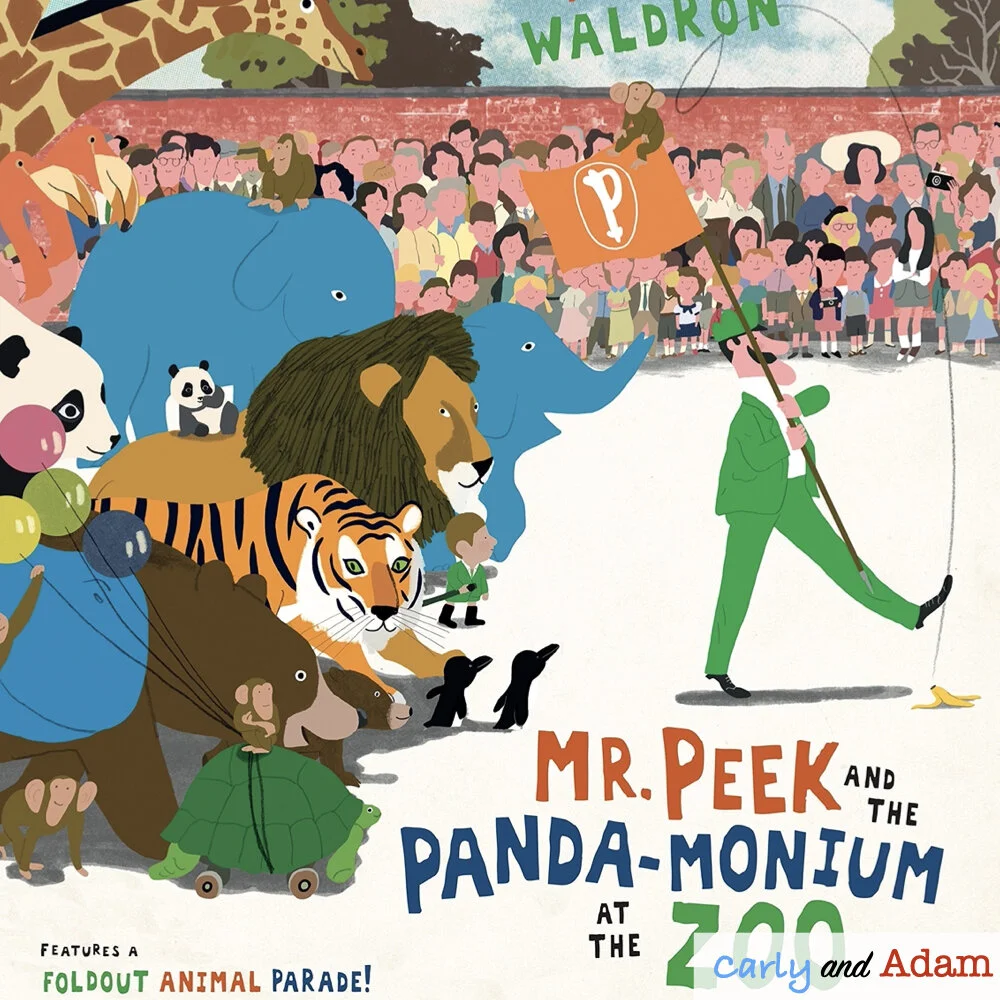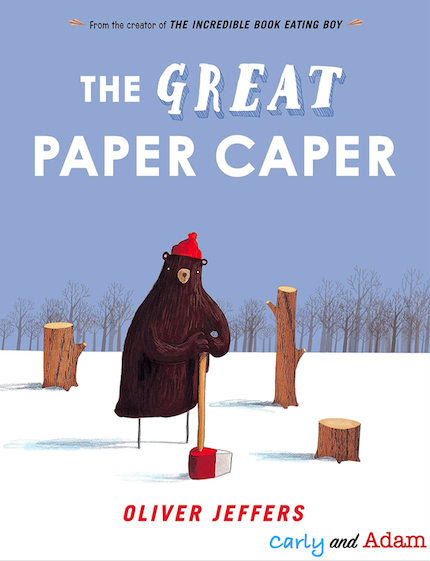4 Things to Consider When Choosing a STEM Read Aloud
The following is a guest post from Dr. Jacie Maslyk.
*This blog post contains Amazon affiliate links. By clicking on the links and making a purchase, we may receive a small commission at no additional cost to you.
4 Things to Consider When Choosing a STEM Read Aloud
Children’s literature can lead students into exploration, creativity, and building in the classroom. As you share stories with your students (or your own children), you are building their curiosity and critical thinking skills. Finding good books can lead to rich conversations and engaging design projects.
I remember reading aloud the story The Panda-Monium at Peek Zoo by Kevin Waldron to my sons and seeing how engaged they were in the illustrations. The bright colors, interesting inclusion of photos, and the hidden cat on each page pulled my kids in making them want to read on. They loved the animal theme and enjoyed thinking about how to help the zookeeper and his son throughout the story.
As an educator and a mom, I liked that the book included some challenging vocabulary words and the opportunities for learners to think creatively and solve problems. The book also opens up the chance to do some hands-on making; building animal enclosures or designing a way to help Mr. Peek clean and feed all the animals. This book is a great example of a STEM read aloud that elementary students will love! It is also a read aloud that provides teachers with easy ways to integrate the engineering and design process.
Getting our students to think creatively when they are listening to stories or reading on their own can happen when we choose books that support design thinking and STEM learning. Choosing the right read aloud selection for your next STEM activity can seem overwhelming, but there are so many great children’s books available! If you are looking for STEM book recommendations our FREE monthly STEM Read Aloud catalog is a great place to start.
How will you know which one to select?
When I think about great pieces of children’s literature that support STEM and maker education, it is usually in terms of the content, theme, or dispositions of the characters. These are questions to consider when selecting a STEM read aloud:
Does the content develop student understanding in STEM?
(sustainability, robotics, construction, etc.)Is the book designed in a creative theme that will engage learners?
(books or illustrations that are made out of cardboard, fabric, or done in watercolors)Do the characters demonstrate learning dispositions that we want to instill in learners?
(creating a plan, perseverance, thinking flexibly, collaboration)
4 Things to Consider When Choosing a STEM Read Aloud
There are so many new children’s authors who are putting out STEM-related stories for elementary-age students. My students often gravitate towards books that have engaging pictures and illustrations. I love to find books that also include rich vocabulary so that literacy skills can be developed alongside STEM skills. When I read books, I am always looking for embedded opportunities to foster innovative thinking and hands-on activities.
Here are four things to consider when choosing a STEM read-aloud:
1. Vibrant Color
Students love books with lots of bright colors or interesting text features. Books like these have bold colors and beautiful illustrations that kids love. Books designed with unique illustrations or text features are great examples of the unique ways authors and illustrators set out their stories for readers. Here are a few favorites for vibrant color and unique text:
Flower Talk: How Plants Use Color to Communicate by Sara Levine
Inky's Amazing Escape by Sy Montgomery
I Wanna New Room by Karen Kaufman Orloff
What To Do With a Box? by Jane Yolen and Chris Sheban
Whether made out of cardboard or laid out through a series of handwritten notes, these books will interest your students and get them thinking creatively.
2. Expanded vocabulary
While I enjoy looking for books that introduce unique content areas and ideas, I also appreciate books with a literary focus as well. Books with robust vocabulary allow students to not only indulge in their creative side but also build valuable literacy skills. For example, in Mark Teague‘s book, The Secret Shortcut, the main characters, Wendell and Floyd, are trying to find a shortcut to school. They move through a dense jungle and encounter different creatures, while the reader encounters vocabulary words like absurd, culvert, and meandered. Books like these introduce students to complex vocabulary but in interesting ways:
The Secret Shortcut by Mark Teague
The Mousetronaut Goes to Mars by Mark Kelly
Consider adding some “remake literacy” strategies to your vocabulary instruction, such as building and illustrating vocabulary meanings and sketching literary elements to make them more concrete for students. Playing games and physically acting out vocabulary can also engage students within the lesson.
3. Inventive Thinking
Books that provoke inventive thinking are great ways to introduce engineering challenges or maker projects to students. In The Dumpster Diver, the characters gather items from the garbage (and from their neighbors) to repurpose them into something else useful. Students will have fun designing new inventions by combining items, just like the characters in the story. Inventive thinking in stories helps students to see that all ideas need to be considered, even ones that may seem a little far-fetched. Sometimes it is the wildest ideas of all that turn into amazing designs! Books like these allow students to consider what is possible when they engage in design and engineering:
The Dumpster Diver by Janet S. Wong
The Great Paper Caper by Oliver Jeffers
4. Element of Surprise!
Think about the read-aloud choices that will bring about curiosity in your students. Students will enjoy books that include a bit of a surprise. Books like Ashley Spires’ The Most Magnificent Thing or The Little Red Fort by Brenda Maier are perfect for this. As readers, we don’t exactly know what the character is working on until the very end. Surprises involve students throughout the story and keep them wondering about what could be. This helps students build imagination while collecting ideas in their minds about the story. They are able to activate that inventive thinking and use it to build understanding.
The classic story, Jennie’s Hat by Ezra Jack Keats is also perfect for creating an element of surprise. Young readers are excited as the birds help Jennie to create an elaborate hat, anticipating what they might add next. Students can design along with the story, adding items to their hats. It is fun to see what students come up with in their own designs. This will encourage students to design and incorporate the element of surprise in the stories they write, too. Stories like these are perfect for adding the element of surprise:
The Most Magnificent Thing by Ashley Spires
The Little Red Fort by Brenda Maier
Jennie’s Hat by Ezra Jack Keats
The Truth Is…
There is no right or wrong way to choose a STEM read-aloud. You will come across unique books and an idea will spark. Use that idea to design a hands-on activity or challenge for your students. Better yet, once you have read aloud a book, ask your students what they might be able to plan, design, or build. Ask them to create a design challenge based on the story. As we are developing the creativity within our students, we can engage them further to take ownership of their learning.
The work of remaking our literacy practices is a fun process. Fall in love with reading books and thinking about ways that hands-on creativity can be added. Your students will love it when you add hands-on activities to the stories read in your classroom. You can find more book ideas and classroom strategies in my book, Remaking Literacy.
Have more questions or need additional resources?
Download our Free Read Aloud STEM Catalog with monthly book recommendations.
Join our Free Facebook Group.
Check out Remaking Literacy: Innovative Instructional Strategies for Maker Learning for different ways to connect STEM and great children’s books.
Want done for you monthly STEM Challenges connected to Read Alouds? Check out our Read Aloud STEM Challenges!
Join our FREE Facebook group Elementary STEM Teachers with Carly and Adam! Learn more about how to incorporate STEM in your classroom or at home and collaborate with other STEM teachers! JOIN NOW!
We hope you have found this blog post helpful. To stay connected with Carly and Adam's teaching tips and classroom freebies be sure to follow us on Facebook, Pinterest, Teachers Pay Teachers, and subscribe to our blog!
An educator for the last 23 years, Dr. Jacie Maslyk, has served as a classroom teacher, reading specialist, elementary principal, and assistant superintendent. She is the author of STEAM Makers: Fostering Creativity and Innovation in the Elementary Classroom, Connect to Lead: Power Up Your Learning Network to Move Your School Forward (ISTE), Remaking Literacy: Innovative Instructional Strategies for Maker Learning and Unlock Creativity: Opening a World of Imagination With Your Students. You can read more on her blog, Creativity in the Making, at www.jaciemaslyk.blogspot.com. Connect with Jacie on Twitter @DrJacieMaslyk or email her at jaciemaslyk@gmail.com .











